Kanban vs Scrum. Which Agile method suits you the most?
Kanban and Scrum. Pros and cons of the most famous Agile Project Management methods thought companies that work with many projects and need...


From the Agile Manifesto to Agile implementation; 5 Agile Project Management phases to manage a project with organization and adaptability.
We all have heard about agile project management, perhaps even without knowing what exactly that is.
Many companies, especially the ones that work in an ever-changing market, and deal with new clients’ needs and necessities, have implemented agile project management methodologies leaving a more traditional project management approach.
Agile project management is an operative method adopted in software development that has largely been appreciated since it allows companies to receive immediate feedback.
Companies adopt an Agile methodology to be able to guarantee a better product thanks to shorter sprints and a step-by-step development process: the agile team gets feedback from stakeholders in each product’s development cycle, not just after the release.
In the 1990s IT managers started to feel traditional project management methods as outdated and not responsive to what the market and its users were asking.
They needed less structured and rigid approaches, more flexibility, freedom in deciding what direction to take, and also, greater adaptability in case of changes.
Software houses needed a different development process; it became necessary to know if their product lifecycle would have been able to satisfy the user’s request because, in a dynamic market, the release of a product is considered too late.
In 2001 the Agile Manifesto was born, thanks to a group of software developers who decided to join and write down a new, almost philosophical, approach to IT development.
Agile project management Manifesto listed 12 principles that focused on user-centered design and emphasize the importance for team members to collaborate, work flexibly and adapt to changes.
But the core of the Agile Manifesto is the 4 main values:
-People and interpersonal relations rather than operations, techniques, or tools;
–Responsive software over exhaustive documentation;
–Collaboration with stakeholders and customers rather than negotiation;
–Answering change rather than strictly following a plan.
The values focused on the software market since the Agile Manifesto was thought by IT developers, but its new project management approach, its consequent iterative approach, and its people-driven philosophy have been implemented in other industries as well.
Industries that felt the traditional project management method was not capable to respond to what the market was asking, started to adopt Agile methodologies to make new products and services.
Aerospace, Advertising, Marketing, Telecommunication, Healthcare and Pharmaceuticals, and Non-profits; are just a few industries that adopted and are still adopting Agile as the main project management method.
Agile project management consists in splitting the project’s workflow into development cycles called sprints where activities get prioritized and put in the backlog.
The development process does not last until the product is completed but it is divided into sprint plannings that focuses on a product’s feature and the first step of product development.
When a sprint is completed, the agile team is ready to receive the first round of feedback and evaluate what initiatives to take: if it is the case to rework something that does not seem to be effective or go on with the next user story and continue to develop the product as already decided.
Years later the Agile Manifesto release, the Association for Project Management (APM) was founded and it came up with a Framework that aimed to help companies rely on iterative and responsive methodologies.
The APM framework was thought to help companies think, plan and develop a project through an initial phase of envisioning the product release.
Agile project management was born focusing on values and principles but, lately, it found a concrete usage in many companies’ daily life thanks to the 5 phases listed in the Agile project management framework.
The first, initial phase in the APM framework is called Envision and it starts with the business plan approval.
It is here that team members meet and find the vision for the project taking into consideration what stakeholders and in-target clients think, needs and how they will benefit from the newborn product/service.
Focusing on these questions arises what features and capabilities the product should have and also which team members are the right ones for the product/ software development.
Timeneye is a time tracking tool used by companies that have adopted an Agile project management approach and need to prioritize the project’s activities and, for a better organization, divide the project into phases.
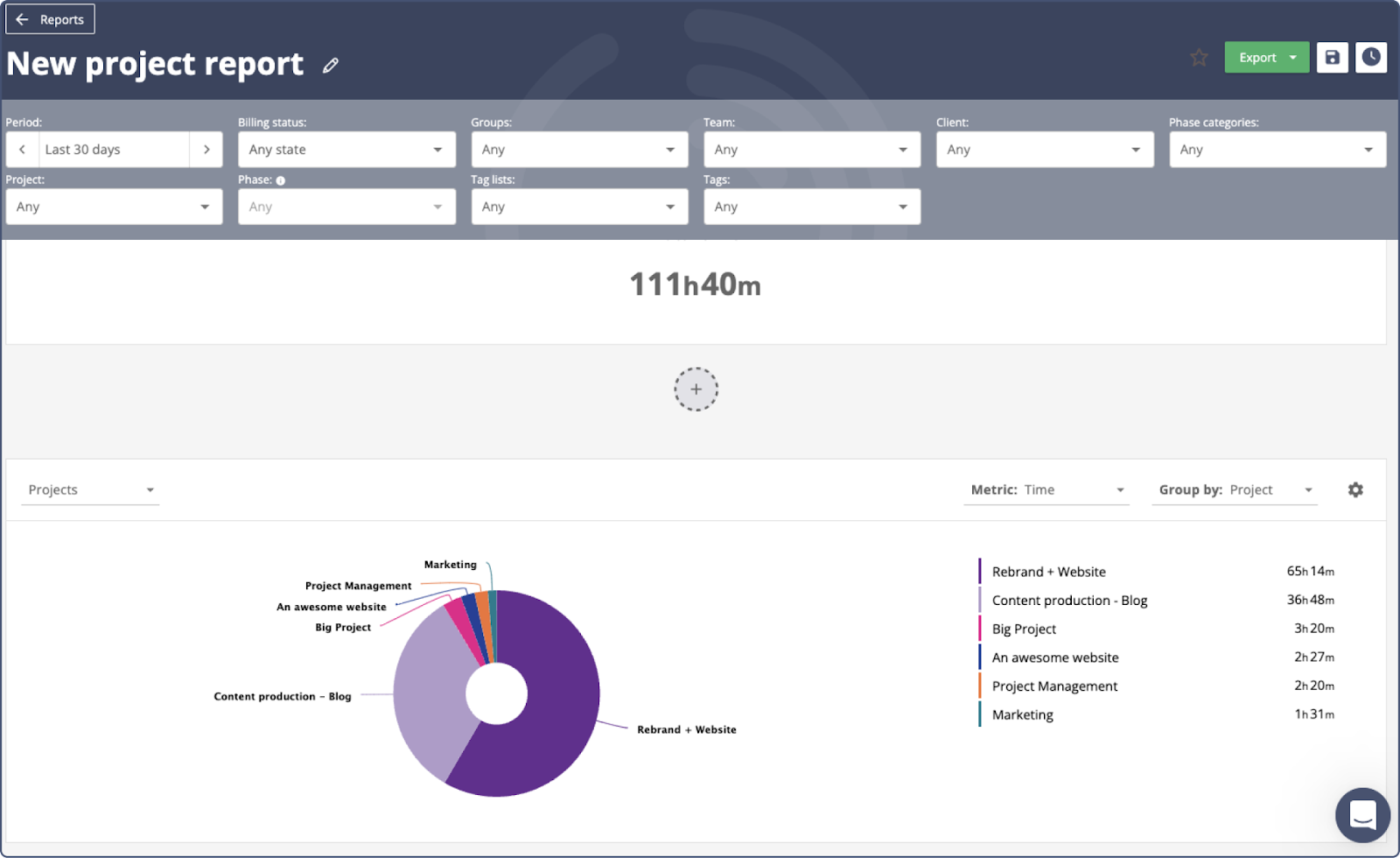

With Timeneye, users can open a project and split it into phases, indeed!
This way, the agile team members can better focus on each sprint and monitor how long activities take and how many people and efforts are involved while keeping an eye on the budget.
In the Envision phase, Timeneye helps the users to write down what was before just theorized.
Let’s think, for example, about a marketing agency that has a client who wants to change the perception that its stakeholder has of his/her brand and related products.
In the Envision phase, the agency “translates” the client’s request in a project and its deliverables: rebranding and website.

In the development process, this can be considered the second step.
The project’s vision is already decided, the project needs are already translated into tasks and to-dos, and it is here that the agile team writes them down in the backlog.
In this step, the project’s expectations appear clear, and it starts to appear also clear the workflow and the project’s lifecycle.
The company might focus on 2 to-dos:
-The team members should have understood and elaborated on what the project takes and what the activities are. After having put them in the backlog, the Agile team can now focus on the user stories to develop product features able to reflect what the user needs.
-Team members have to prioritize activities, clarify how long a step might take, and how many people and resources are involved.
The project indeed implies a multi-level collaboration, and the development process should have an iterative approach.
The iterative approach means that the team must make improvements, test, and adjust, every time a usability issue rises and needs to be addressed.
Let’s think about the marketing agency that just got a new project to take care of, “Rebrand+website”, and needs now to decide and prioritize the necessary activities, evaluate how much time a project might take and how many resources it would need.
Timeneye helps the company do so thanks to the possibility to split the project into phases, allocating a budget to each of them and a certain amount of time necessary to conclude them.
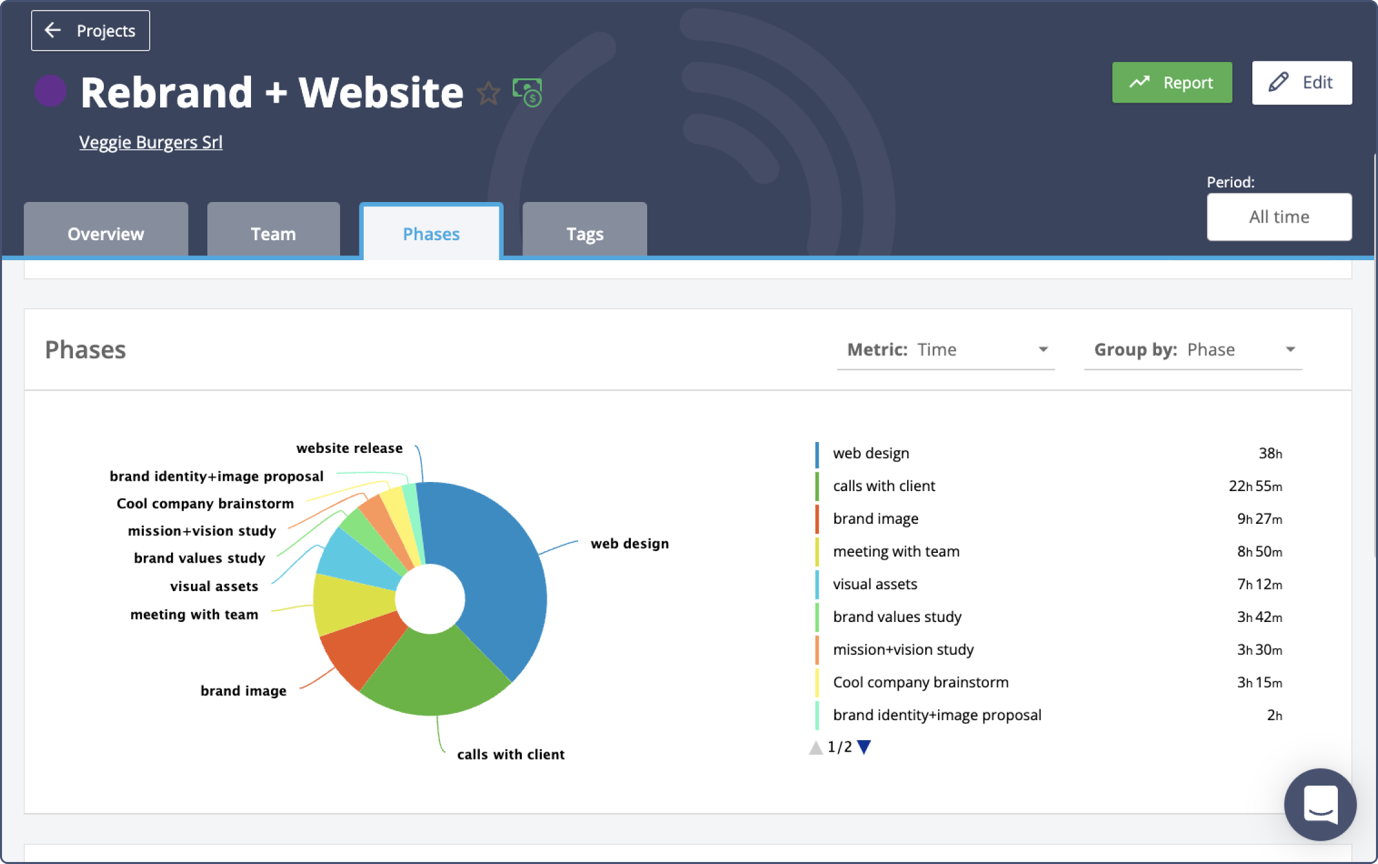
At this stage, the team members explore the various possibilities they have to develop the product’s features respecting what was already established.
What the team members do, gets tested here; this means that the vision of the project (Envision phase) and its related tasks and activities (Speculate) are put into practice here. How? Transforming the needs into a development process that adopts an iteration approach to consider each sprint as completed (think, build, make adjustments, test, and release).
To better develop the product’s features, the Agile team will go further in understanding the user stories and, later, the users’ feedback.
As with all the Agile project management phases, the Explore phase is highly user-focused.
To evaluate which direction might better help the team to develop the “Rebrand+website” project, the company might rely on data already acquired regarding similar projects developed through different approaches.
Timeneye is indeed able to collect data, store it on the cloud and make reports able to give the users insights and data resources to take reliable and trustworthy decisions for the next future.
Total time, money, billable and non-billable hours, and the whole project cost are just a few metrics that you might use not just to see how your project went, but also, for next, upcoming, similar ones that might help you taking decisions and evaluations in advance without wasting any of time.

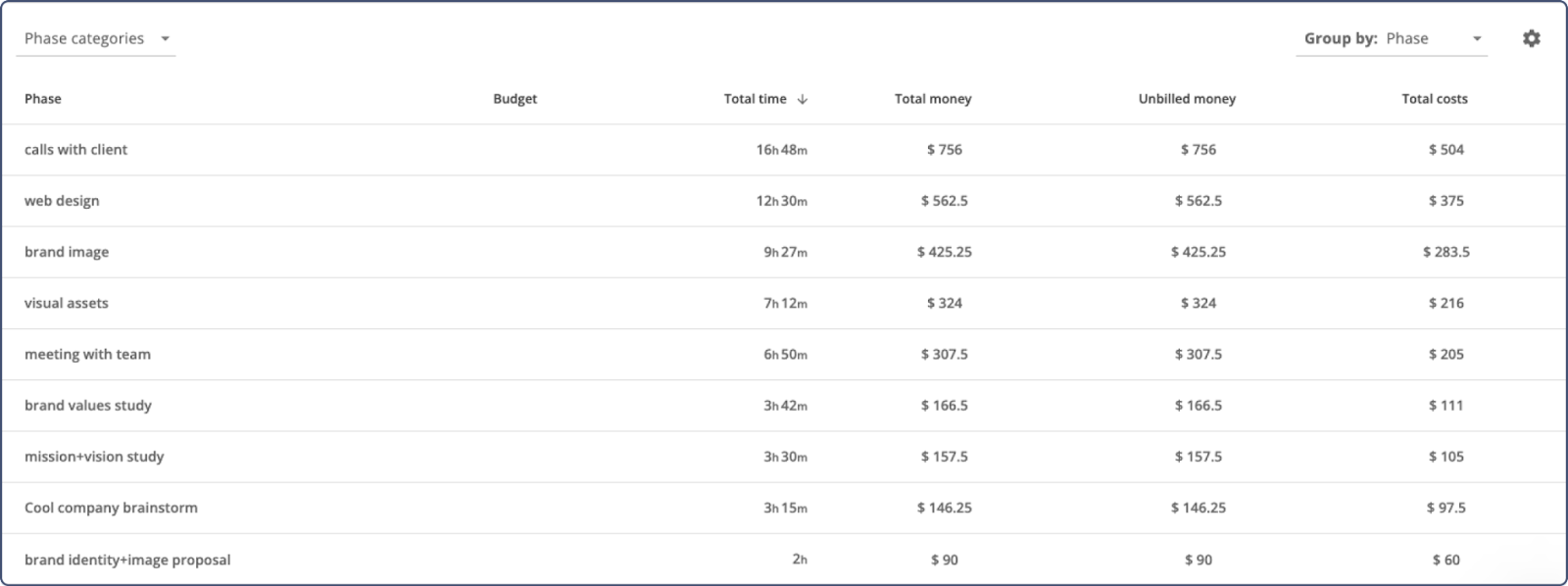
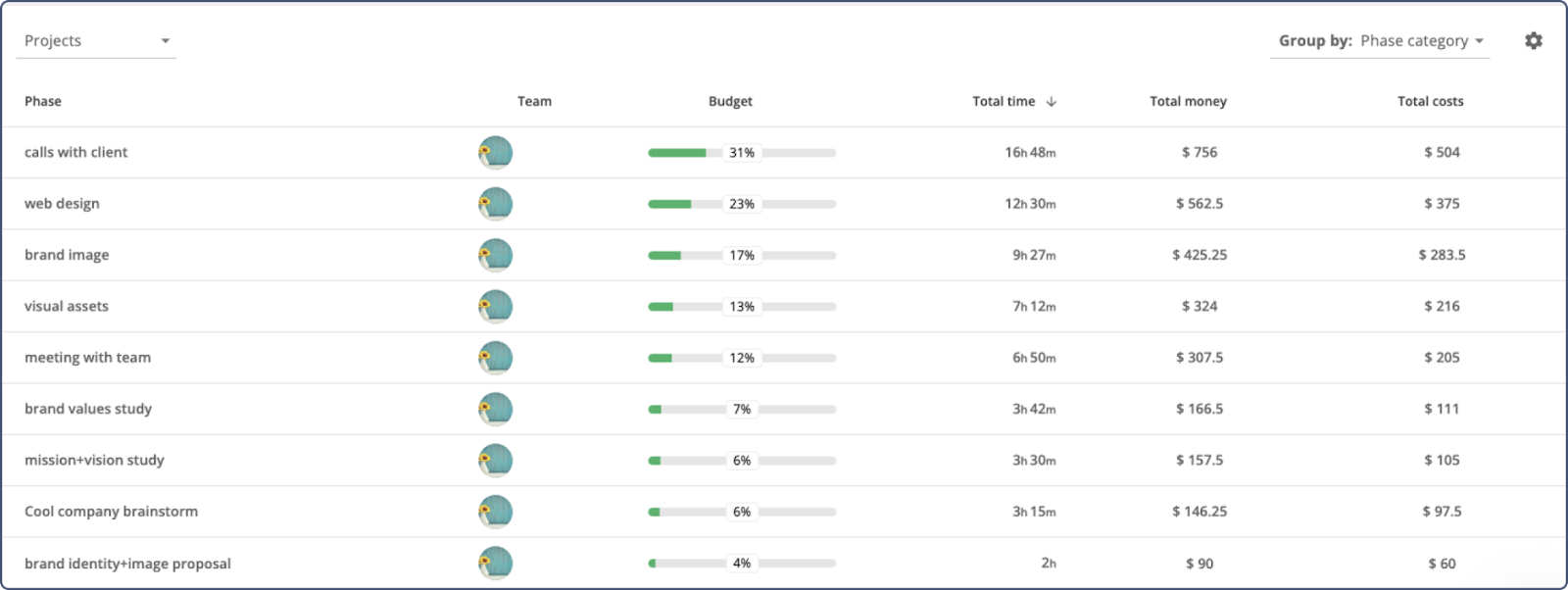
In this fourth phase, the team members get the first reviews of what they have been doing and it is here that the product gets the first fixes.
The adaptation phase might imply a change of direction, adopting another project’s approach based on the client’s feedback.
This can be a major turning point because in case the product does not satisfy the clients’ necessities, the agile team needs to come back to the previous project’s phases, or, in case the product corresponds to the users’ necessities, the project workflow aims to an end.
In the Adapt phase, Timeneye might help the marketing agency to collect the data and see how “done” activities have been taken care of, and evaluate if, from an internal point of view, the iterative approach of thinking, building, making adjustments, test and release (in this case we can, internally, consider a product release when the one who is taking care of it feels ready to share it with the rest of team) have been done properly.
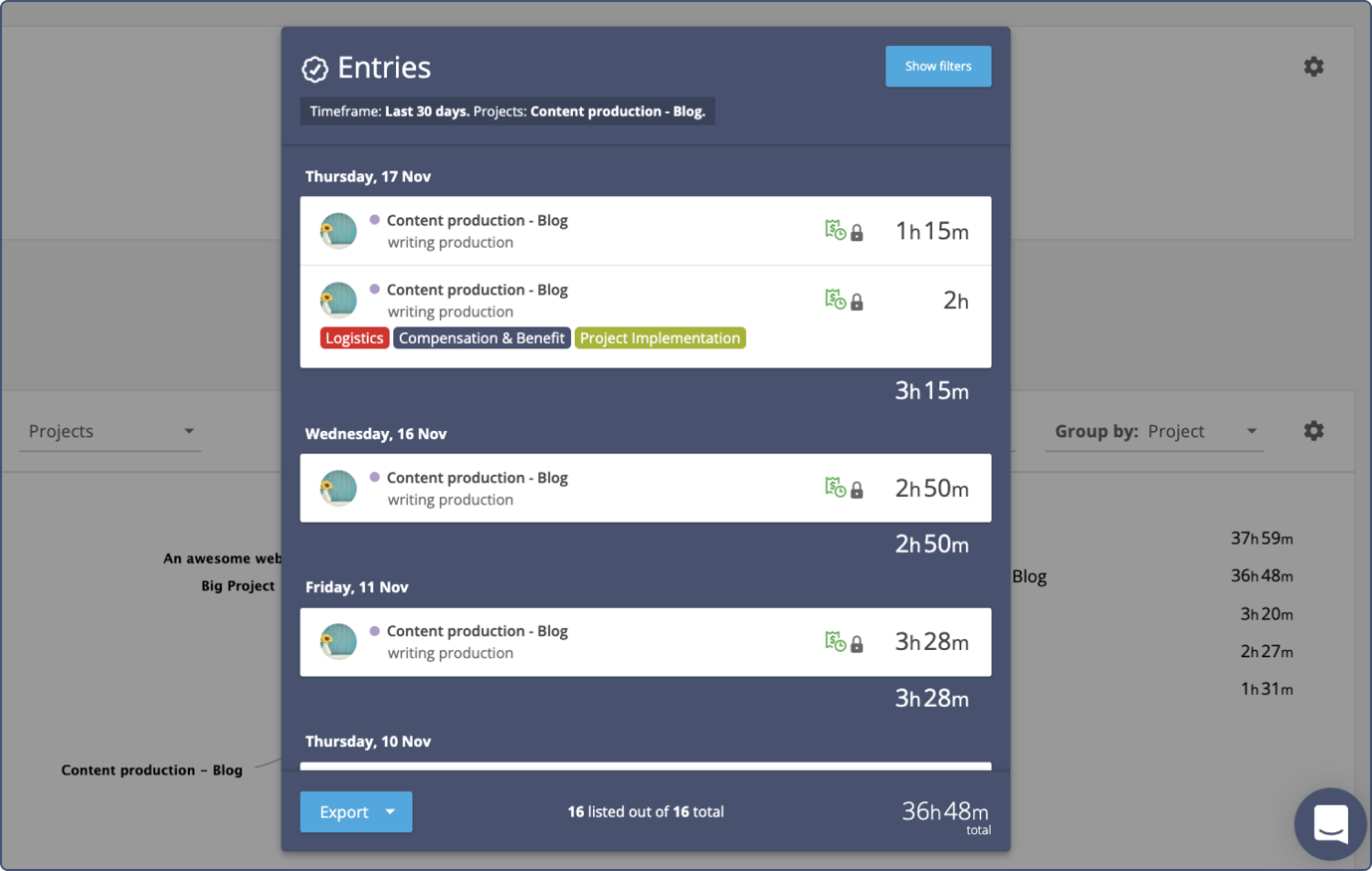
Timeneye allows users to customize the reports to focus on what is important to them!
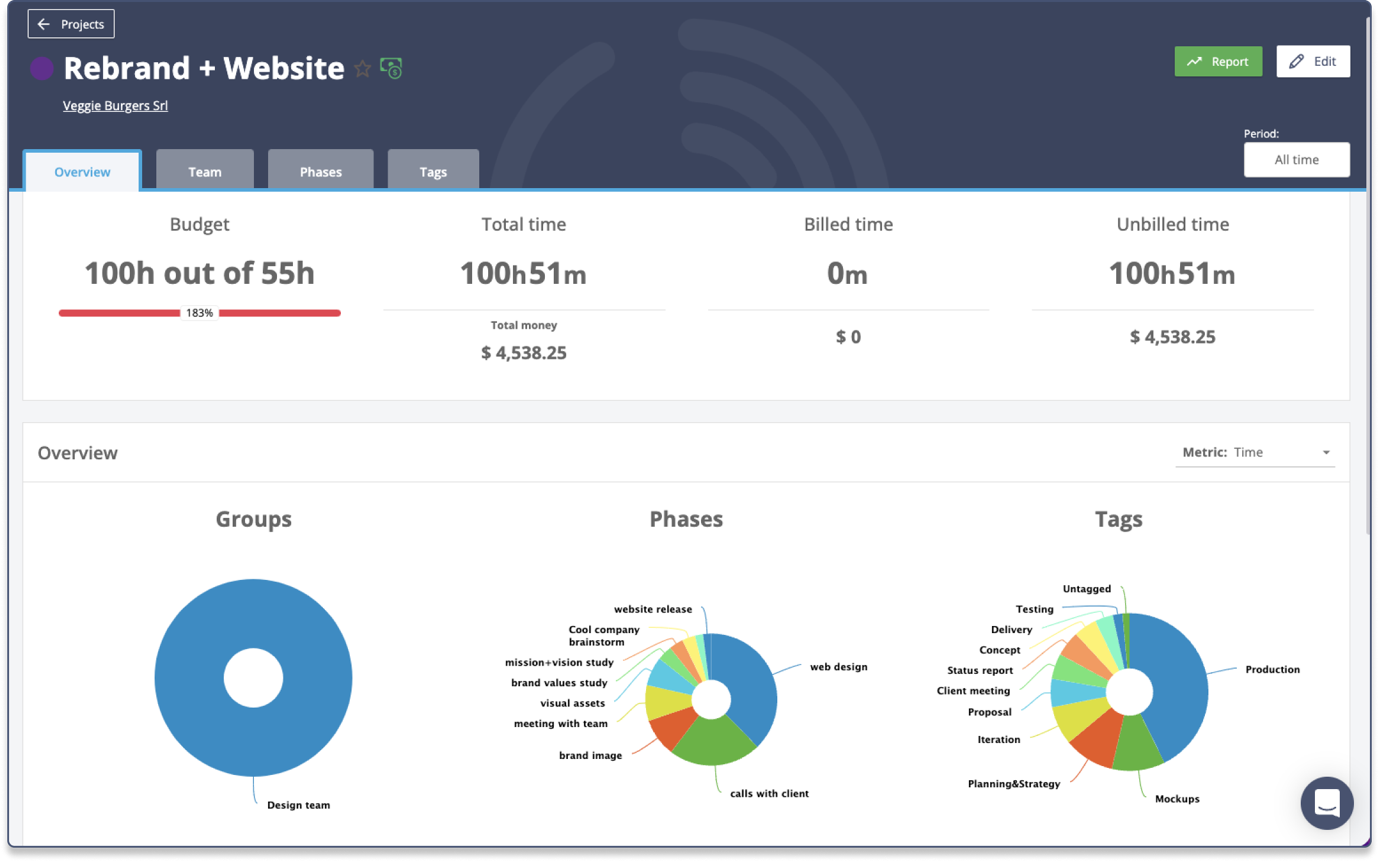
It is also possible for them to set weekly, or even daily, reports and also receive an automatic email able to give an overview of the weekly activities.
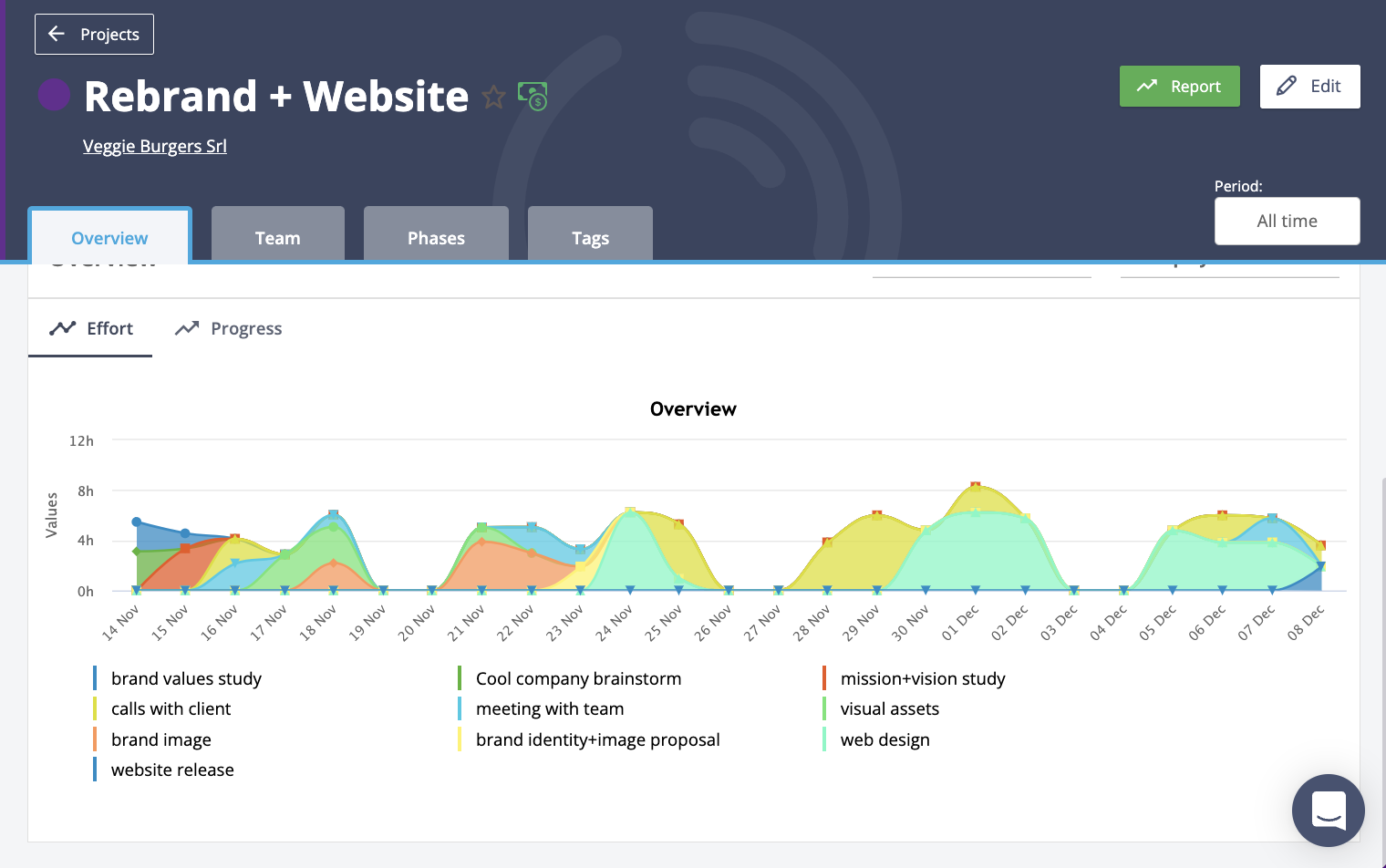
The agile project management framework considers this as the latest project phase.
At this point the project should be ready to be delivered or, instead, the team will have to come back and make some reworks.
These phases are typically used in Agile project management methodologies such as Kanban and Scrum.
Kanban relies on Kanban boards to help the agile team visualize work and see in detail the workflow to follow and the project’s work in progress.
Timeneye offers you great help since it easily integrates with project management tools, such as Jira, that rely on kanban boards to structure, in a visual manner, the projects’ workflow.
Scrum is the most utilized Agile method and it strongly goes hand in hand with the Agile project management phases.
Scrum relies on sprints and it utilizes an iterative approach to release products aligned with what the market asks.
Agile project management was thought to guarantee IT companies more adaptability to changes in a market driven by continuous changes.
The Agile approach is considered by nowadays risk management as less risky since it manages proper priorities and it develops a product/service taking into consideration step-by-step users’ feedback without waiting until the end of the product.
This means remaining on time to adjust, fix and change direction or new products’ implantation required by the clients.
Agile’s iterative approach and emphasis on continuous feedback allow the team to take insightful choices after having collected significant data.
Thanks to customers’ collaboration (as the values say), regular testing and product releases in a shorter amount of time than traditional project management, guarantee companies greater customer satisfaction.
Agile project management phases teach us the importance of timing if we want to work in competitive markets.
Let Timeneye help you out; sign up and receive our free 14-day trial!
Here are two options to kickstart your journey toward enhanced productivity:
1) Try Timeneye for free. If you’d like to see Timeneye in action and possibly test it with your team, you can start your free trial today.
2) Schedule a demo session with us, where we can show you around, answer your questions, and help you see if Timeneye is the right tool for your company.
Kanban and Scrum. Pros and cons of the most famous Agile Project Management methods thought companies that work with many projects and need...
The best practices for managing multiple projects across departments, including effective communication, task management and project management tools.
Project management is hard, but with the right tools, it's more manageable. See how to use MS Teams for project management, in combination with...